The Northern Lights have captured imaginations for centuries. This Northern Lights FAQ tackles the common questions people may have about the Aurora Borealis.
What Are the Northern Lights?
The Northern Lights, known scientifically as the Arctic aurora polaris, is a natural astrophysical phenomena. They are the dancing lights that can be seen in the winter sky.
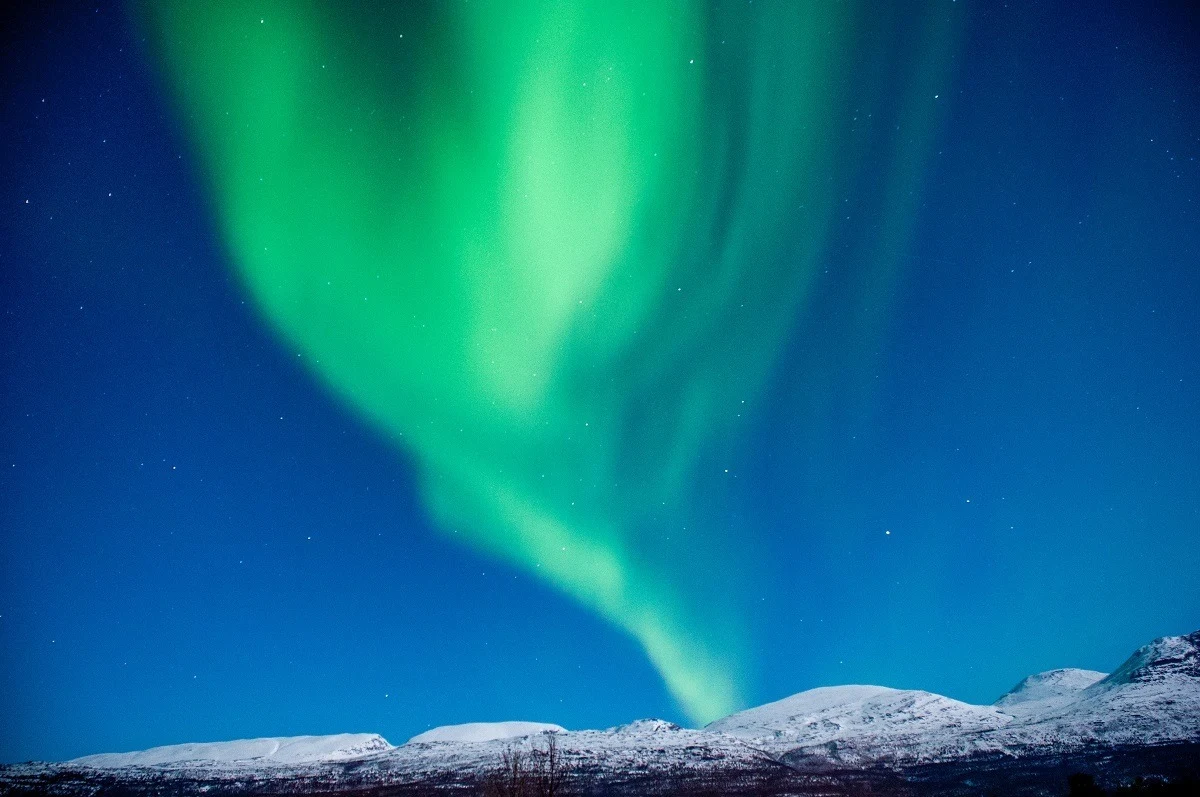
What causes them?
The polar lights occur when super-charge particles are ejected from the sun via solar flares and propelled into the solar system. When these particles enter the upper levels of Earth’s atmosphere, they align in a ring-like pattern with the magnetic fields of the polar regions (both North and South Poles). These super-charged particles emit energy that is visible to the naked eye, as well as energy in the invisible light spectrum.
What do they look like?
The appearance of the lights varies. To the naked eye, the light might appear green, gray, or even pink. Some people say that the Aurora can look like wisps of smoke in the sky.
Can they be predicted?
The short answer is, short term forecasts are possible, but long term predictions can be unreliable. The dancing Aurora Borealis are notoriously unpredictable. While some say that it is largely being in the right place at the right time, there’s more to it than that.
There are Aurora forecasts that are available. These are much more accurate than general weather forecasts because they are based on the planetary magnetic field. The forecast, called a Kp-index, is rated on a scale of 1 to 9 and can give you an indication within a few days of whether there will be an Aurora.
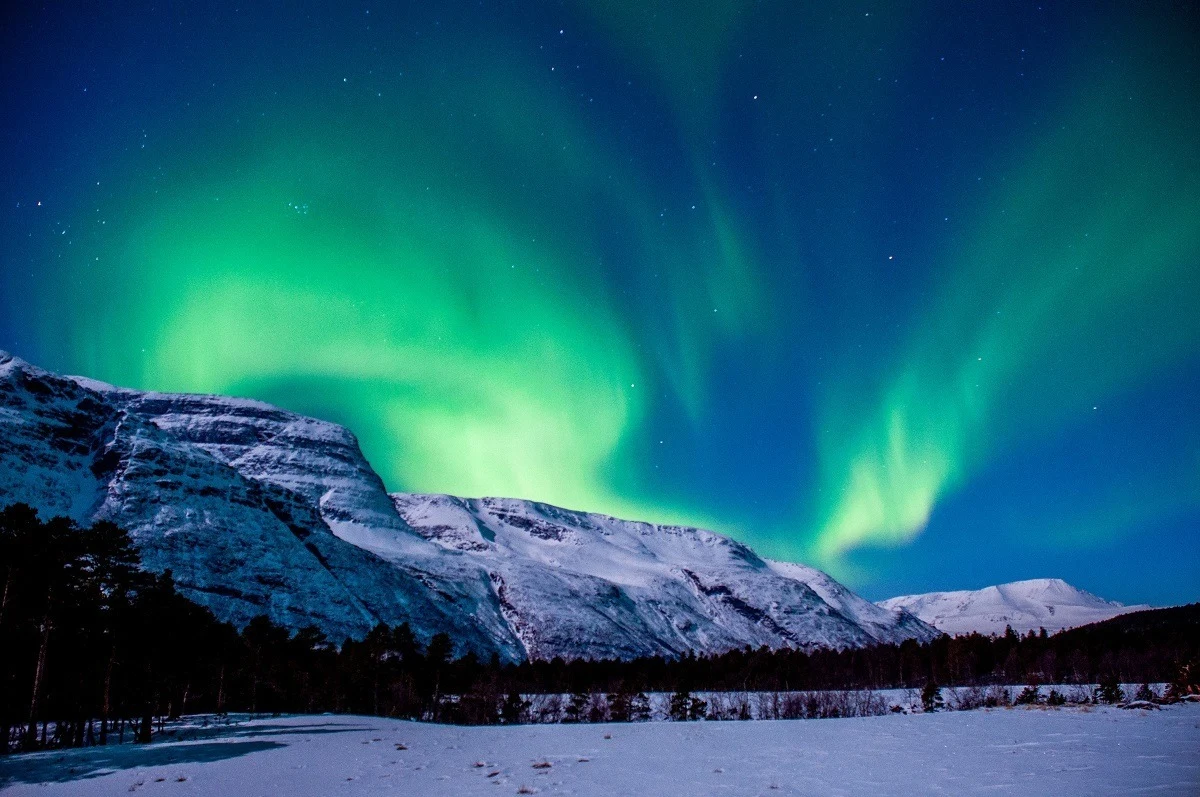
What is the KP Index?
The KP Index is often called the Aurora Prediction Index, but it really isn’t. The KP Index measures the disturbances of the Earth’s magnetic field. The KP Index is expressed on a scale of 1 to 9 – with the higher numbers representing more magnetic activity. You can see the KP index report here.
There’s a very good chance of seeing the lights with any KP over 4 or 5, but higher numbers are indicative of both better chances to see the lights and more vivid light displays.
How do sunspots or solar flares affect them?
Like most natural phenomena, the sun has a unique solar cycle lasting approximately 11 years. At the point called Solar Maximum, the sun has lots of sunspots that throw off electrically charged particles, which can reach Earth. These particles can amplify the Aurora that we see – particularly how far south that the lights can be visible.
Is there a Northern Lights cycle?
Yes, the Northern Lights cycle follows the solar cycle. Aurora activity is usually at its peak for several years of Solar Maximum. But the lights can be seen at any time in the cycle. Every year is a good year to see the lights, but some years represent exceptional opportunities. 2025 is the next predicted peak for Aurora activity.
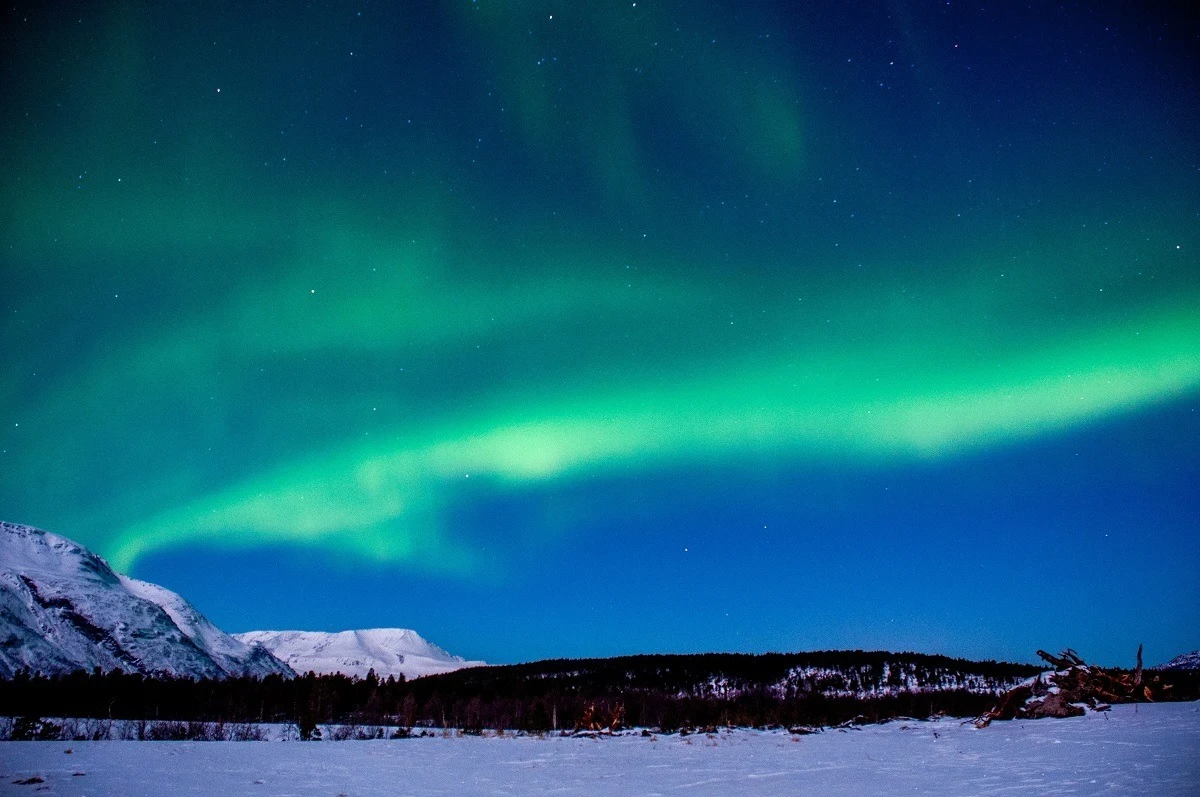
How does moonlight impact the lights?
In short – it doesn’t. Aurora activity isn’t impacted by moonlight or lunar cycles.
However, the amount of moonlight could impact your ability to see the lights. If the lights a faint, a full moon make it difficult to see them. Try seeing lights around the new moon phase.
If photographing the Aurora, some moonlight could illuminate the foreground and make for interesting images. But in general, it is better not to have much moonlight.
Do they make a sound?
Given that the Aurora is dancing above the earth between 60-70 miles, and the speed of light is far greater than the speed of sound. However, native communities have said they have heard the lights make sounds. Its unlikely that the lights make sounds.
Where Can You See the Northern Lights?
To see the lights, you need to be north – way north. Generally, this means you need to be above the Arctic Circle (66° 34′ N) into an area called the aurora belt. That’s way, way up there.
The further north you go, the better your chances of seeing them. If you’re planning a trip to Norway, that means Tromso or Alta, but certainly no further south than Bodo. That said, in periods of intense auroral activity, the lights have been seen as far south as Bergen.
In Iceland, you need be away from Reykjavik. There’s good aurora hunting near Akeryeri in the north. But also good viewing on the South Coast.
Finally, in Alaska, you want to head to Fairbanks. And in Canada, head to Yellowknife.
Does it need to be cold to see them?
No. Temperature has no effect on the Aurora. Since the lights are seen in the dark and in northern latitudes, it is often cold. But the lights are not caused by the temperature.
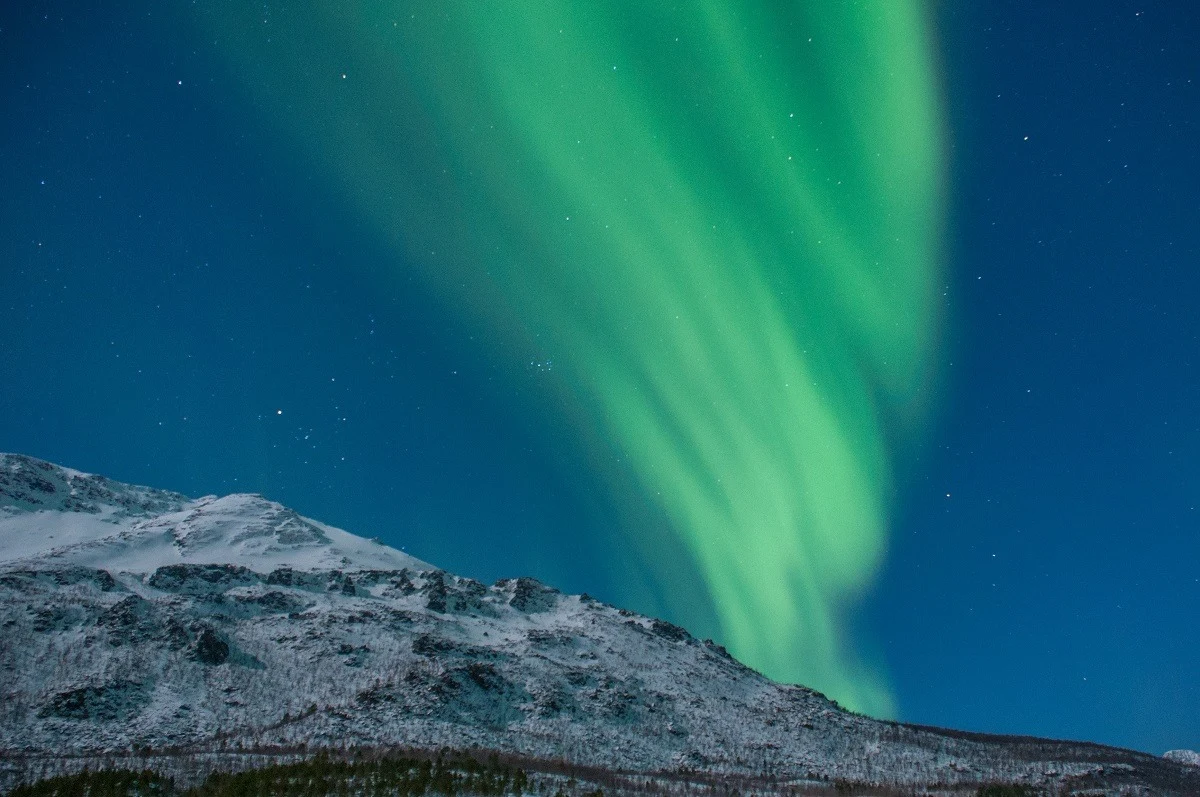
When is the Best Time to See the Northern Lights?
The aurora borealis can be seen from late September to late March. If you’re wondering when to see the Aurora Borealis, the best times are generally around the equinoxes: September-October and March-April. We’ve found that November, February, and early March can also be really good. December and January can be pretty cold, so early or late in the Aurora season offer good visibility and slightly warmer temperatures.
The lights can be visible from 6pm to 6am – any time it is dark. From our experience, in Norway there were really two waves of aurora lights. Every night there were lights from 9:00-10:00pm. There was also a second wave of lights from 11:45pm-1:00am. The best lights were always around midnight. But, since the lights are unpredictable, every night is different.
In Iceland, some of the best viewing was a little earlier, from 9:00-10:30pm.
How do you photograph the lights?
You need a camera which allows you to control all settings manually. Open the camera’s aperture all the way to let in as much light as possible. Then try different time settings to see what comes through. Capturing the lights requires trial and error – and a lot of patience.
For more information, please see our Northern Lights photography guide.
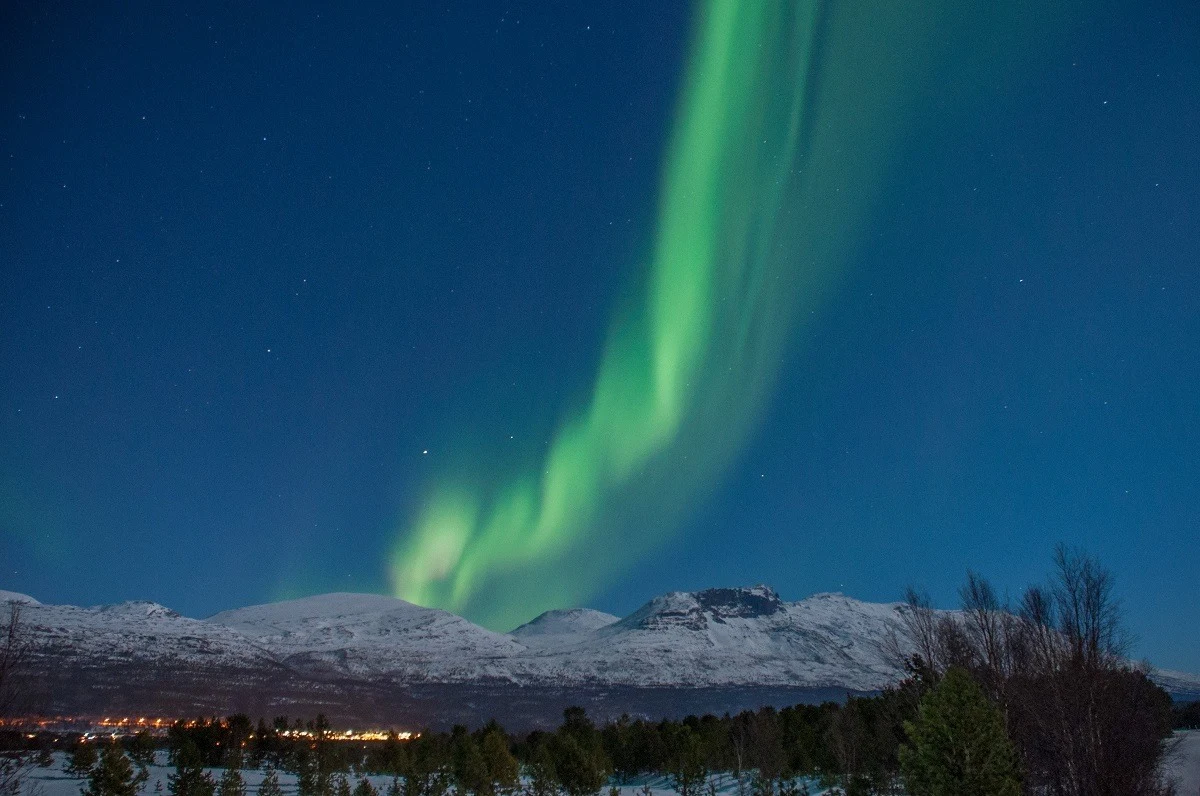
Do Northern Lights look like the pictures?
Intense Aurora displays look similar to the naked eye and cameras. However, the camera senses light at spectrums beyond the naked eye. So photos of the lights are more vibrant and intense than what you might see.
Is it Worth it to See the Aurora Borealis?
In a single word: absolutely. It was one of the most remarkable travel experiences we’ve ever had. The Northern Lights should be on your bucket list.
Lance Longwell is a travel writer and photographer who has published Travel Addicts since 2008, making it one of the oldest travel blogs. He is a life-long traveler, having visited all 50 of the United States by the time he graduated high school. Lance has continued his adventures by visiting 70 countries on 5 continents – all in search of the world’s perfect sausage. He’s a passionate foodie and enjoys hot springs and cultural oddities. When he’s not traveling (or writing about travel), you’ll find him photographing his hometown of Philadelphia.

Mag
Friday 24th of March 2023
Don't have to go that far north per this author. Last night they were as far south as Cobourg, ON. They were seen in Kawartha's alot during March 2023.